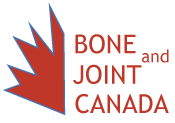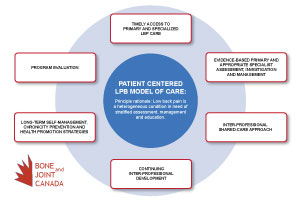Recurrence of low back pain is common, therefore management plans need to incorporate education and self-management strategies that are consistent with chronic condition management strategies. The following needs to be considered in the development of the strategy to educate patient on the management of low back pain.
- Early education needs to provide patients with reassurance, a realistic prognosis and a clear plan with appropriate support based on individual patient needs to enable success.
- Management plans need to include evidence-based strategies with an ultimate goal of self-management and prevention. This should be undertaken using progressive active interventions with SMART goals enabled through brief action planning.
- Patient support programs and support groups should be available to inform treatment options and continue to promote the benefits of self-management.
- Mandates informed, shared decision making and appropriate follow-up.
Generalized poor health and physical condition are associated with poor LBP outcomes and need to be addressed in a holistic preventative or reparative manner as part of the overall individual LBP management (self-management or otherwise) strategy.
- Psychosocial risk factors and/or concurrent psychiatric comorbidities (e.g. depression) are most predictive of developing chronic LBP.
Identification of patients with yellow flags and addressing patient specific concerns and expectations using Motivational Interviewing and Brief Action Planning is paramount in chronicity prevention and is most effective early in the continuum of care for LBP. - For patients deemed to be at high risk of chronicity (e.g. identified using the START Back Tool) or those failing appropriate primary care interventions, stratified management plans need to include further education on the effective aspect of chronic pain (e.g. chronic pain video from Australia) and consideration for additional psychological support as part of management (e.g. using Cognitive Behavioural Therapy to learn coping strategies).
Individuals present with different learning styles, therefore successful educational strategies need to include multiple formats e.g. written material such as brochures, on-line material as well as patient education directly through healthcare providers.

Patient and primary care education: Choosing Wisely
Prepare patients and primary for discussions on the appropriate use of investigations
![]()
Patient education: Back Care Canada
Educational web site for patients and primary care
![]()
Patient education: Back Care – a charity in the UK
![]()
Patient education: YouTube video
Patient education
![]()
Patient education: Interprofessional Spine and Education Clinic
Patient education
![]()
Patient education: Back book
Patient education book which is only available through private purchase
Patient education: So your back hurts
Patient education booklet
![]()
Patient education: Saskatchewan Spine Pathway
Patient education booklets
![]()
Patient goal setting: SMART goals
Goals setting approach where S = Specific, M = Measurable, A = Achievable, R = Realistic, T = Timeline/target
Patient goal setting: Cognitive Behavioural Intervention
An approach to working with patients to develop goals and promote recovery
![]()
Patient goal setting: Pain catastrophizing
Self administered questionnaire that determines pain catastrophizing behaviour
![]()

